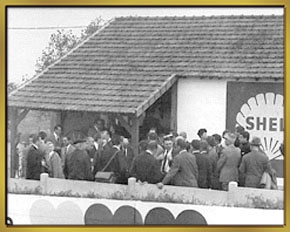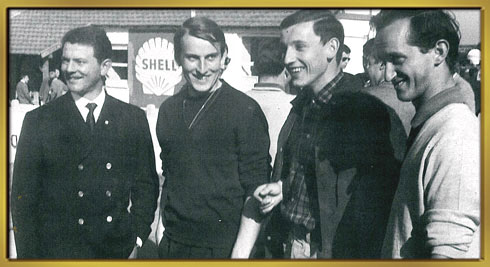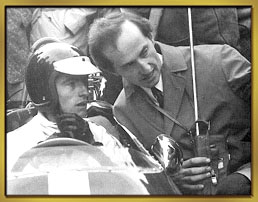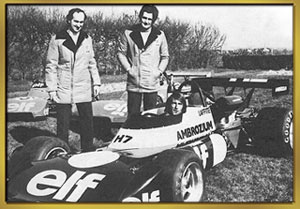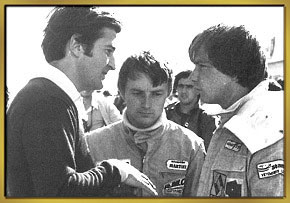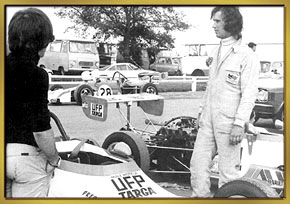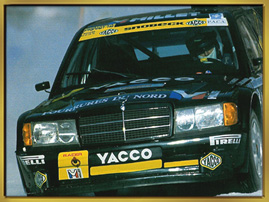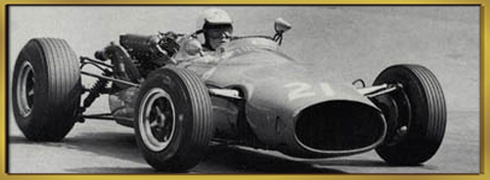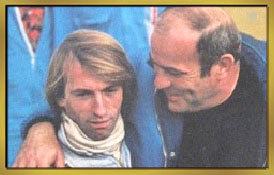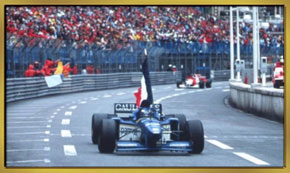
The Winfield School
It is then decided that a single-seater car will be offered for the 1964 season to the best student of the 1963 course. The « Volant Shell » is born. Bill Knight, former pilot and race organizer, buies the name and the right of this course and finance it. The success is ensured for this first year because there is already 300 students registered. For the anecdote Jean-Pierre Jaussaud is elected 1st " Volant Shell". In 1964, Bill Knight decides to replace the name of "Jim-Russell" by « Winfield » in relation to his company named « Winfield Mortor Racing Schools Limited ». Good friend of Bill Knight, Tico Martini arrived in 1963 replaces Henry Morrogh as school director in May1965. Tico, who will have a significant impact on the circuit, was born in 1934 in Pigna. He is native from Italia. With a background of garage mechanic, he is very soon attracted by car sports. A few changes are operated in 1966, when Bill Knight decides to quit the business giving his shares to Mike and Richard his two sons and to Tico. Mike also becomes instructor at the school .In 1967, bored by the bad performances of the cars used by the school, Tico decides to start to produce his own competition cars. His first car is called MW1, M like Martini and W like Winfield.
From Jean-Pierre Jaussaud to René Arnoux, through José Dolhem, numerous future great pilots will succeed at the « Volant Shell » in Magny-Cours. Then, after 11 editions this distinction disappear in 1974 and is being replaced by the « Pilote Elf ». The concept remains the same but the sponsor is changing. Yves Le Strat becomes the 1st Elf pilot. The Winfield School building is today the only building still remaining.
"Wheels" list until 1991
Hugues de Chaunac and ORECA The first rocks of ORECA (Organisation-Exploitation de Courses Automobiles) are set up in 1972. Hugues de Chaunac, R8 Gordini and then Formule Renault pilot, decides to stop racing to create his company. However he doesn't leave the car competition world because the company he wants to create will be dedicated to racing car maufacturing. After several years spent in Paris and a first contract with Elf, ORECA moves to Magny-Cours in 1975.
He will even tempt the F1 adventure in 1978, experience that will not be succesful. In Formule 3, he will also be several times French Champion notably with Alain Prost in 1978 and 1979. Later on, ORECA will diversify its activities by becoming at the same time a racing Team (F2, F3, FR, F3000, Rallye, Production) and a company importing and distributing racing cars' spare parts. In 1987, the year before the Jean Behra circuit destruction, Hugues de Chaunac decides to move and come to set up his company in Var, in the Paul Ricard circuit. It is also the time he chose to diversify again ORECA's activities. He decides to sell sports equipment and accessories, and to develop merchandising activities but also to engage its company in the event sector by organising incentives and pilot courses for companies and individuals. In the mid 1990's, ORECA start a partnership with Chrysler for the conception of the Viper. This experience will allow them to develop their expertise in high technology. In Viper, Oreca will arrive three times first(1997,1998, 1999) of the teams GT2 ranking in FIA-GT Championship. They also have good results in the Le Mans 24Hours with a notably a good 7th place in 2000 at the general ranking. In 2004, ORECA buies the SNBE company to Dany Snobeck. This company is specialised in engines conception, and in 2007 they also buy "Courage Compétition" .
Dany Snobeck and Snobeck Racing Service
Like Tico Martini and Hugues de Chaunac, Dany Snobeck, racing car pilot, also decided to create his company close to the Magny-Cours circuit. He founds the « Snobeck-Groupement Sportif Mécanique » company in 1978, company that will become Snobeck Racing Service in 1980. In 1980 and 1981, the company will be in charge of the Ford preparation, and from 1982 to 1984 Dany Snobeck will work for Alfa Roméo, being more specifically in charge of the GTV.
In 1996, the companies changes its name for SNBE-Snobeck : SN for Snobeck, BE for Béchu, the name of his partner Jean-Pierre Béchu who becomes the company's director. From 2001 to 2003, Dany Snobeck is director of the Dijon-Prenois circuit. In 2004, SNBE becomes a ORECA's subsidiary. The company renamed « Oreca Magny-Cours » becomes the group's "engine" subsidiary and keeps working with Citroën Sport, Seat Sport, Porsche France and theMagneti-Marelli network by focusing on the engine development. 2004, is also the year Danychooses to create his event company called « As Events », company specialised in car sports.
The Ligier Team Former international rugby player, Guy Ligier really starts to mark the French motorsports in 1959 and 1960 when he manages to win two French Moto Championships titles. His popularity and performances go increasing and in 1966 he manages to become F1 pilot. It is In 1968, while he decides to create a Formule 2 Team with his friend Jo Schlesser, that his racing car manufacturer career is really launched. Unfortunatly , Jo will tragically die following an accident on he French GP. Guy Ligier will nevertheless choose to pursue their adventure and produces in 1970 the Ligier JS1 (JS refering to his died friend). He will pilot this car at the Le Mans 24Hours with Jean-Claude Andruet. Following the creation of Automobiles Ligier, his car production will increase. Around ten JS2 will be engagned in the Le Mans 24Hours from 1971 to 1975 with notably an excellent 2nd place obtained in 1975 with Guy Chasseuil and Jean-Louis Lafosse driving. The JS2 adaptability qualities will be recognized because it will also win the 1974 Tour de France Auto edition. The Ligier Team keeps growing up by becoming the SM Maserati assembler for Citroën, and in 1976, a new step is crossed with the birth of the F1 Team.
The Ligier adventure in F1 will last 20 years. 20 single-seater cars will engage on 326 Grand Prix. The Ligier Team will notably win a great second place at the manufacturer's ranking in 1980.
In 1997, Guy Ligier decided to sell his Team to the 4 time World Champion Alain Prost, but the Prost GP adventure will end in 2002, after 5 seasons. Not prepared to leave the car competition world, Guy Ligier decides to start a partnership in 2004 with an important character of the Magny-Cours story, the famous Tico Martini. The Ligier/Martini partnership is fruitful, in 2005 the two racing car manufacturers are back in the competiton in Formule 3 and Sport Prototype. In Formule 3, they nourish hopes to the JS47 meanwhile the Ligier JS49 (Sport Prototype) takes part to the event ending the "Challenge Sprint Moderne" in Magny-Cours and the sucess is already there because the car ends in second position. Inspired from Racing News VdeV N°008 Source and acknowledgment: Jean-Louis BALLERET (1993)
|
